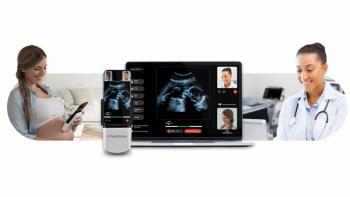
Ultrasound matches MRI and gold standard tests in detecting extent of Crohn’s disease
Color Doppler flow and sonographic wall thickness are as good as -- and in some cases better than -- contrast MRI for showing the extent of Crohn’s disease. Both ultrasound and MRI match clinical results from barium studies, surgery, and colonoscopy.
Color Doppler flow and sonographic wall thickness are as good as - and in some cases better than - contrast MRI for showing the extent of Crohn's disease. Both ultrasound and MRI match clinical results from barium studies, surgery, and colonoscopy.
Dr. María J. Martínez and colleagues in the radiology department of the Hospital Universitario Dr. Peset in Valencia, Spain, published their study in Abdominal Imaging, which made it available online Jan. 24.
They studied 30 patients with a histological diagnosis of Crohn's disease. Patients received both ultrasound and MRI exams on the same day. Each patient was examined first with ultrasound, looking at five segments of the gastrointestinal tract for bowel wall thickness, vascularity pattern, and perienteric changes. The patients then received a contrast agent for MRI tests that looked at bowel wall thickness, bowel wall enhancement, and perienteric changes.
The results of these exams were compared with gold standard diagnostic tests for Crohn's disease. These clinical and laboratory tests, including barium studies, surgery, and colonoscopy, showed 45% of the 119 bowel segments had pathological changes. Ultrasound was better than MRI at localizing affected bowl segments, with a sensitivity of 91%. MRI had a sensitivity of 83%.
Ultrasound also excelled at recognizing transmural complications, with a sensitivity of 80%, while MRI had a sensitivity of 72%, although statistically significant differences weren't found.
There was a statistically significant correlation between color Doppler flow and MRI bowel wall enhancement, both on a segment-by-segment and a per-patient analysis. A correlation was also found between ultrasound and MRI findings of perienteric changes.
For bowel wall thickness, sonography found significantly greater thickening in patients with clinical activity or clinical-biological activity of their Crohn's disease, while MRI contrast enhancement and hyperemia were greater in patients with clinical-biological activity.
The researchers concluded that ultrasound and MRI can both effectively localize bowel segments affected by Crohn's disease as well as assessing the extent of complications of the bowel wall. Color Doppler flow was also found to correlate with enhanced MRI contrast. Along with sonographic wall thickness, these signs correlated with clinical or biological activity.
Newsletter
Stay at the forefront of radiology with the Diagnostic Imaging newsletter, delivering the latest news, clinical insights, and imaging advancements for today’s radiologists.




























